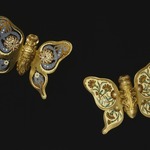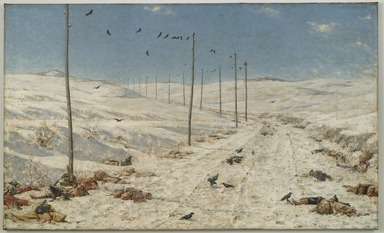


Download our app and ask your own questions during your visit. Here are some that others have asked.
What is this?
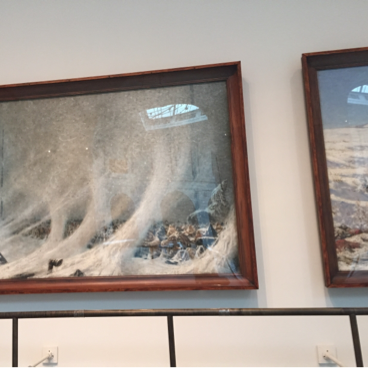

Vereshchagin painted a series of twenty paintings about the Russo-Turkish war that started in 1877.
This is like a before-and-after pair: thousands of Turkish prisoners of war froze to death while being marched from Plevna to Russian prisoner-of-war camps on the Danube River in the dead of winter. Vereshchagin watched the men collapse out of weakness. It's a strong anti-war statement, influenced by the artist's eyewitness experiences.
Was Vereshchagin a soldier ?
Vereshchagin wasn't a soldier, but he did volunteer as a staff member for the Russian army at the outbreak of the Russo-Turkish war in 1877 (He was assigned without salary or uniform to the staff of General Dmitry Skobelev in Bulgaria). He saw himself more as an artist and a documenter of the war. He often traveled with the military so he could witness combat and paint battle scenes, but was actually very critical of the war and the actions of the Russian military.
Horrified and deeply affected by what he had seen, Vereshchagin had created these paintings as open anti-war statements. He has said: "As an artist, what I am faced with is war, and I bash it with as much strength as I have; whether my blows are effective-that is another question, a question of my talent, but I bash it with all my might and without mercy."
Crows picking at bodies-this is horrifying. Are they soldiers? Where is this set?
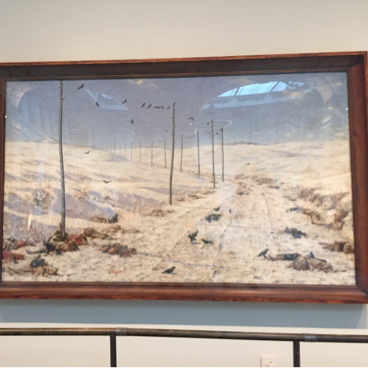

It is, isn't it? Vereshchagin painted his direct observations during the Russo-Turkish war. Turkish prisoners or war froze to death while being marched from Plevna in northern Bulgaria to Russian prisoner-of-war camps on the Danube River in the dead of winter. Vereshchagin watched the men collapse out of weakness. The two paintings serve as a sort of before-and-after: In the days after the tragedy, there was nobody to move the bodies off the road so passing carts and gun-carriages crushed them into the snow.
I'm interested in how it's placed next to the Anisfeld seascape. Is there a narrative to be drawn from this wall? Or is it more thematic?


This wall is devoted to Russian modern art and features thirteen paintings spanning 100 years. The diversity of their scale, subject-matter, and style is a tribute to the dramatic aesthetic and political changes taking place in Russia, and across Europe, during the late-19th and early-20th centuries. Large-scale landscapes seen from unusual perspectives were a popular genre in Russia at this time. The paintings by Vasily Vereshchagin and Boris Anisfeld both draw attention to the vastness of the Russian Empire's landscape and the powerful impact of the elements. Vereshchagin shows the ferocity and bleakness of winter in the fields of Bulgaria. In Anisfeld’s canvas, painted from the Aiou-Dagh Mountain in the Crimean Peninsula, the artist introduces a new aerial viewpoint emphasizing the clouds and reducing the battleship below to a tiny object in the vast sea. Vereshschagin's picture conveys a message about the nature of warfare. The artist witnessed the devastating Russo-Turkish war of 1877 and was deeply affected by the loss of life on both sides.
What is the setting of this painting? Are those dead people on the ground?
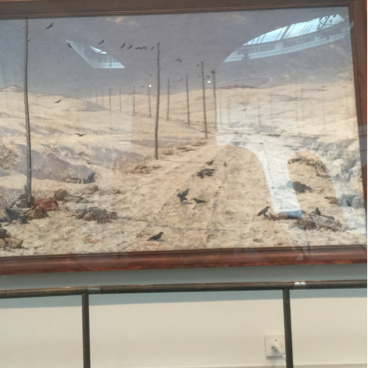

You're right those actually are dead bodies on the frozen ground. The artist, Vasily Vereshchagin, painted what he witnessed during the Russo-Turkish war. In 1877, while working as a war correspondent, he witnessed thousands of Turkish prisoners freezing to death while being marched from the city of Plevna in Bulgaria to Russian war camps on the Danube River. This scene is the day after when the people who had frozen to death over the night were just run over with carts and tanks as they passed. Very gruesome.
You can see Vereshchagin's other painting, depicting the night before, the prisoners huddled together during the snow storm to keep warm, just down the wall from this one.
Can you tell me the story behind this?


Vasily Vereshchagin, the artist, volunteered for the staff of the Russian army. He wanted to go to the front lines in order to (in his own words) "see with my own eyes a regular European war" and to "observe, feel and study people". The two Vereshchagin works you see there serve as a sort of "before and after" of the same scene. In "A Resting Place of Prisoners," you see the Russian soldiers and the Turkish prisoners buckling down in a snowstorm while marching to the Danube and in "The Road of the War Prisoners," you see the aftermath of the bodies left frozen on the Russian road.
Was the artist a soldier? If so, did he suffer any injuries during his observations?
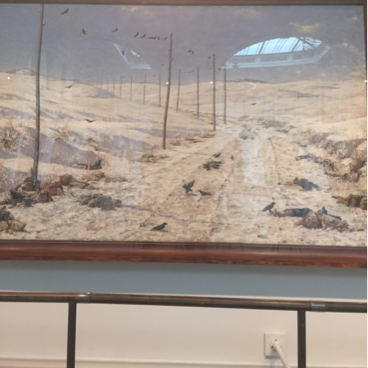

Vasily Vereshchagin was a war correspondent. With the outbreak of the Russo-Turkish War in 1877, Vereshchagin, who was living in Paris at the time, volunteered for the staff of the Russian army. He wanted to go to the front lines to observe what was happening and these two paintings were created out of what he witnessed.
He was wounded, but during a different incident than the one represented here. While on board a Russian ship that was placing navel mines, Vereshchagin was hit in the hip with a bullet when the Turkish army started firing at the ship from the shore. His wound almost killed him but he eventually recovered and traveled to the battlefront at Plevna, in northern Bulgaria, the aftermath of which he painted in these two pictures.
This painting's size and subject matter struck me. I'm also interested in this because I've never seen Russian artists displayed together before.
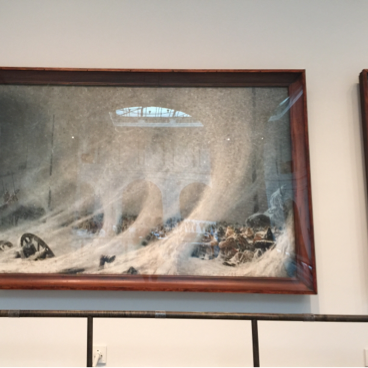

This painting and the one next to it by Vasily Vereshchagin were both painted from his direct observations along the road from Plevna (in present-day Bulgaria) to Russian prisoner-of-war camps on the Danube River. He was deeply disturbed and moved by what he saw happening to the captured Turkish troops. He wrote: "The frost set in so suddenly...that the brave defenders of Plevna in their stiff frozen overcoats were too weak to resist it, and by ones and twos fell on the road and were frozen to death."
Did the artist get in trouble for his paintings? They're very moving.
Yes, Vasily Vereshchagin's depictions of the negative, rather than the heroic, aspects of war found him in opposition to the Russian state for most of his life. This painting and the one next to it were both painted from his personal observations of a horrific event during the Russo-Turkish War (1877-78). After the Russian army sacked the city of Plevna in northern Bulgaria, they marched thousands of Turkish soldiers to Russian prisoner-of-war camps on the Danube River in the dead of winter. Thousands died. The paintings were so displeasing to the Russian military and those closely tied to the monarchy that the Grand Prince refused to see them when they were exhibited in Moscow in 1879. Consequently,later that year when the Grand Prince was in Paris, Vereshchagin refused to see him or let him see his paintings. After this, Grand Duke Vladimir, the President of the Academy of Arts, began to severely criticize Vereshchagin for his "impossible subjects." Vereshchagin's works were censored in Russia and he had a difficult time selling them in Europe. By the turn of the century, he was famous for his "war against war" and his work was cited and debated by peace activists and politicians. In 1901, he was nominated for the first Nobel Peace Prize.
Very powerful! What war is depicted here?
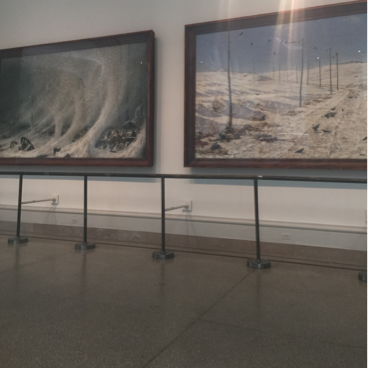

These paintings are from the Russo-Turkish war that took place in the late 1870s. Specifically, these depict the aftermath of the 1877 Battle of Plevna in modern day Bulgaria.
Vereshchagin also observed a lot of Russian military activity in Central Asia. He was a military staff artist from 1867-1870. What I find most interesting though is that his portrayals didn't show how great and powerful Russia was; his view was objectively about the horror and pain of war, irrespective of which side you're on.
What happened in this scene?
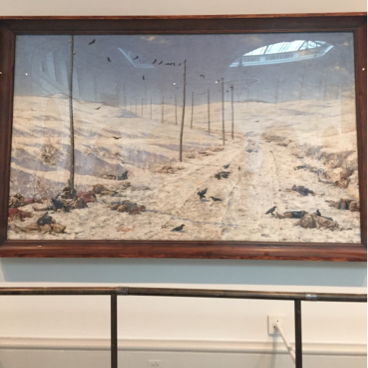

Both the large paintings by Vasily Vereshchagin depict a terrible event during the Russo-Turkish War in 1877, which the artist witnessed as a war correspondent. After the Russian army sacked the city of Plevna in northern Bulgaria, they marched thousands of Turkish soldiers to Russian prisoner-of-war camps on the Danube River in the dead of winter. The one on the left shows the poorly dressed prisoners huddled together for warmth in the harsh during a terrible snow storm.
The painting that you sent the picture of is the morning-after. The prisoners froze overnight and perished right on the road. Not wanting to waste time, the Russian soldiers continued on, leaving the dead behind, even crushing them under foot and under horse-drawn carriages. They are truly gruesome scenes of war.
I don't think I've seen snow depicted in this way before.


What about it feels innovative or unique to you? It kind of goes against the natural order of events, or how we think of the progress of snow, right? Usually snow falls down, but this reversal, this violent sweeping upward, creates this sense of unease, and even violence.
Yes, you're right about the upwards motion, it seems cyclonic. The paint seems so thin in places. Can I see the canvas surface?
That's a great question, I can't tell from here, I would have to go up and look at it up close.
There's super thick paint next to untouched canvas, I think.
The artist painted these in Paris at the height of Impressionism, we can see this influence in the broken brushstrokes, but looked also to Gustave Courbet and Realism, note the mottled surfaces throughout. The condition of this picture is actually pristine. When it was treated in 2010 for the current hang, our conservators only removed a yellowed varnish layer and found the original paint intact.
Your colleague may be right. I see thicker paint in that grey brown too. I think now it might be washes!
Also, something about these figures reminds me of Goya's May 3rd. They're both horrific scenes.
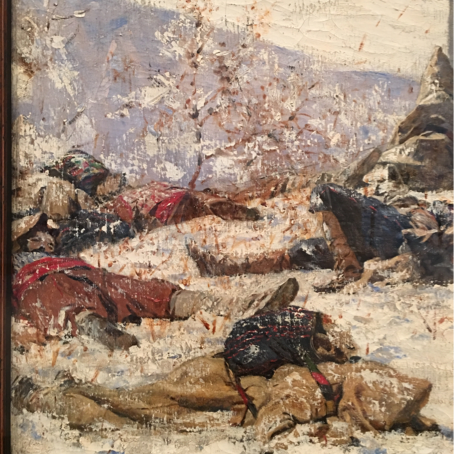

I really like your Goya comparison. Vereshchagin's art, like Goya's, really does show us the horrors of war!
Were they painting at the same time?
I'm certain that Vereshchagin was aware of Goya's work as this was completed some 70 years later. Goya passed away in 1828, about 20 years before Vereshchagin was born.
Ah, there you go then. Dates are never my strong point! Thanks! I much prefer this to Google.
Thank you!
Was the artist a soldier?
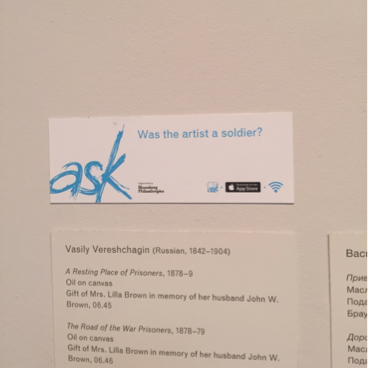

With the outbreak of the Russo-Turkish War in 1877, Vereshchagin a Russian who was living in Paris at the time, volunteered for the staff of the Russian army. He wanted to go to the front lines in order to "see with my own eyes a regular European war." He was assigned without salary or uniform. Although he fought actively in the war, he was not strictly or exclusively a soldier. He also acted as a correspondent, documenting the war of his own volition and as sanctioned by the military.
What war was this? Where is this taking place?
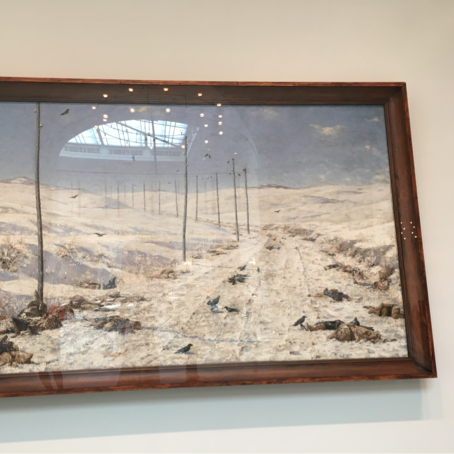

Vereshchagin is depicting scenes from the Russo-Turkish War, which occurred between 1877 and 1878. Vereshchagin himself was a war correspondent for the Russian army. The battle depicted is the Siege of Plevna, a decisive stage of the conflict, in which the Russian and Romanian forces defeated the Turkish army's stronghold of Plevna, in Northern Bulgaria. Eventually, the Russian victory led to the liberation of Bulgaria and the establishment of the Bulgarian state.
Is this the same artist you see on the book jackets of Gogol?


It's possible, there are many covers available for Gogol's works today. Like Gogol's writing, Veresechagin's paintings are known for being surrealistic and grotesque. Vereshchagin is a rather famous Russian war painter of the 19th century. He is known for his graphic realism and was born and raised in northern Russia. He traveled extensively and worked artistically during military expeditions in which he also participated.
Could you tell me more about the artist?


Vasily Vereshchagin is a rather famous Russian war painter of the 19th century,. He is known for his graphic realism and was born and raised in northern Russia. He traveled extensively and worked artistically during military expeditions in which he also participated.
I'm looking at the two paintings be Vereschagin.
Each of the paintings shows a scene from the Russo-Turkish War , more specifically, the 1877 Battle of Plevna in modern day Bulgaria.
In the painting to the left, prisoners huddle in a snowstorm. In the other, their frozen bodies lie on the snow in the aftermath of the storm and their imprisonment.
Wow I found it very scary. I'm used to seeing paintings of battle scenes but not of grim aftermath.
Indeed they are, and very dramatic! The artist observed these scenes first hand! He was commissioned by the Russian government to paint the army in action, but Vereshchagin was shocked and appalled by the realities of war.
Usually the battle paintings I see are glorifying it or ultra-patriotic.
Exactly! His method of painting war went against the trends for painting the subject in Russia at the time. His paintings were criticized by the government and military.
What are on the posts?
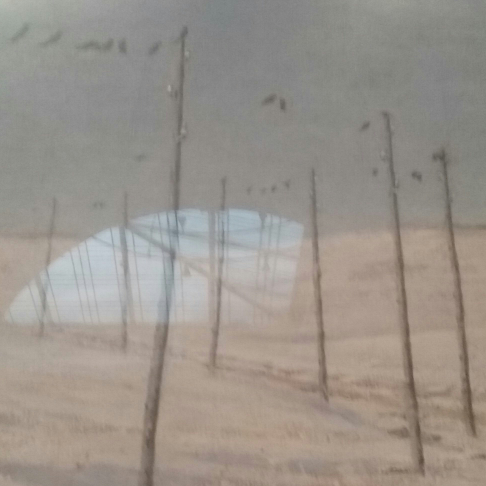

Very perceptive! We have tried to find a definitive answer, but haven't been able to. Our best guess based on the location and time period is that they were for some kind of telegraph wires.
In 1879?
Yes! The telegraph went into use beginning in the 1830s-40s.
Sounds right. Must be wireless!
You almost can't see them, but the wires are what the birds are sitting on.
It seems that both paintings are on the same road. First, the storm with lots of cold people, then the dead and desolate.
They may well be on the same road! While Vereshchagin would have sketched on site, these were painted in the studio and can be understood to include a bit of his opinion.
He was commissioned by the government to paint the glory of the Russian Army, but what he saw on the front lines so horrified him that he painted these instead.
It is also worth mentioning that, even before going to war, some of Vereshchagin's work was quite dark.
His work is quite large. How did he get away with it?
As for his method of making, he dealt with the size by first creating field sketches and then painting a series of twenty larger paintings about the war in his studio in Paris later that same year. The size was more manageable when working this way.
Is this painting showing the 1900’s?


It's actually the 1800s! This was painted between 1878 and 1879. This shows what Plevna looked like after the battle that took place in 1877.
Where's the focal point in this?
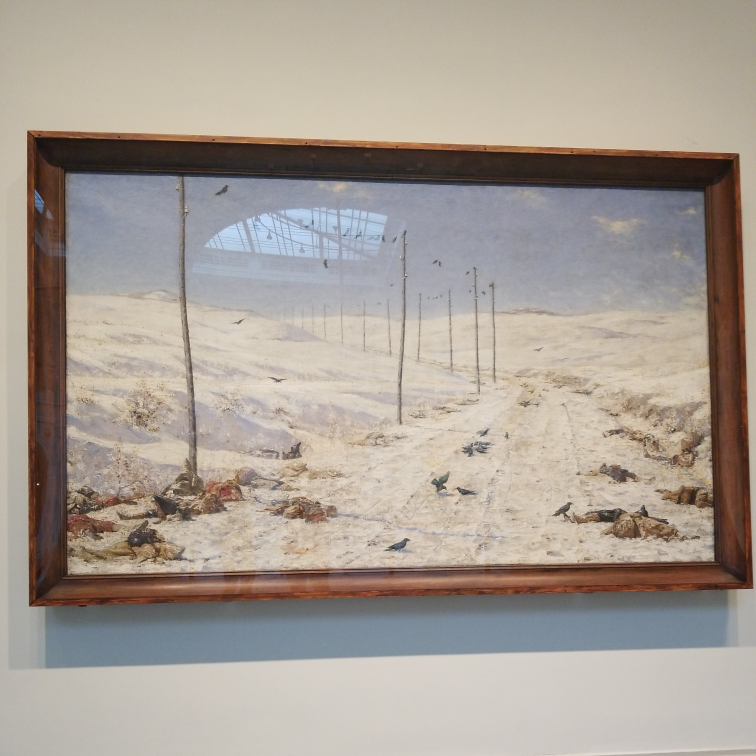

Which area of the painting would you say immediately draws your interest or attention?
The crows on that deserted road.
That's a good choice. This painting doesn't really have one strong focal point, which is itself significant. In the mid- to late-nineteenth century landscape painters experimented with representing landscape without an invented focal point like the traditional rules of art would require. The way these crows are lined up help to lead you eye down the road.
The concentration of bodies near the pole on the lower left would also be an option. Their density and weight compared to the rest of the composition is more akin to a traditional focal point.
This painting is so haunting...can you tell me about the background story please?
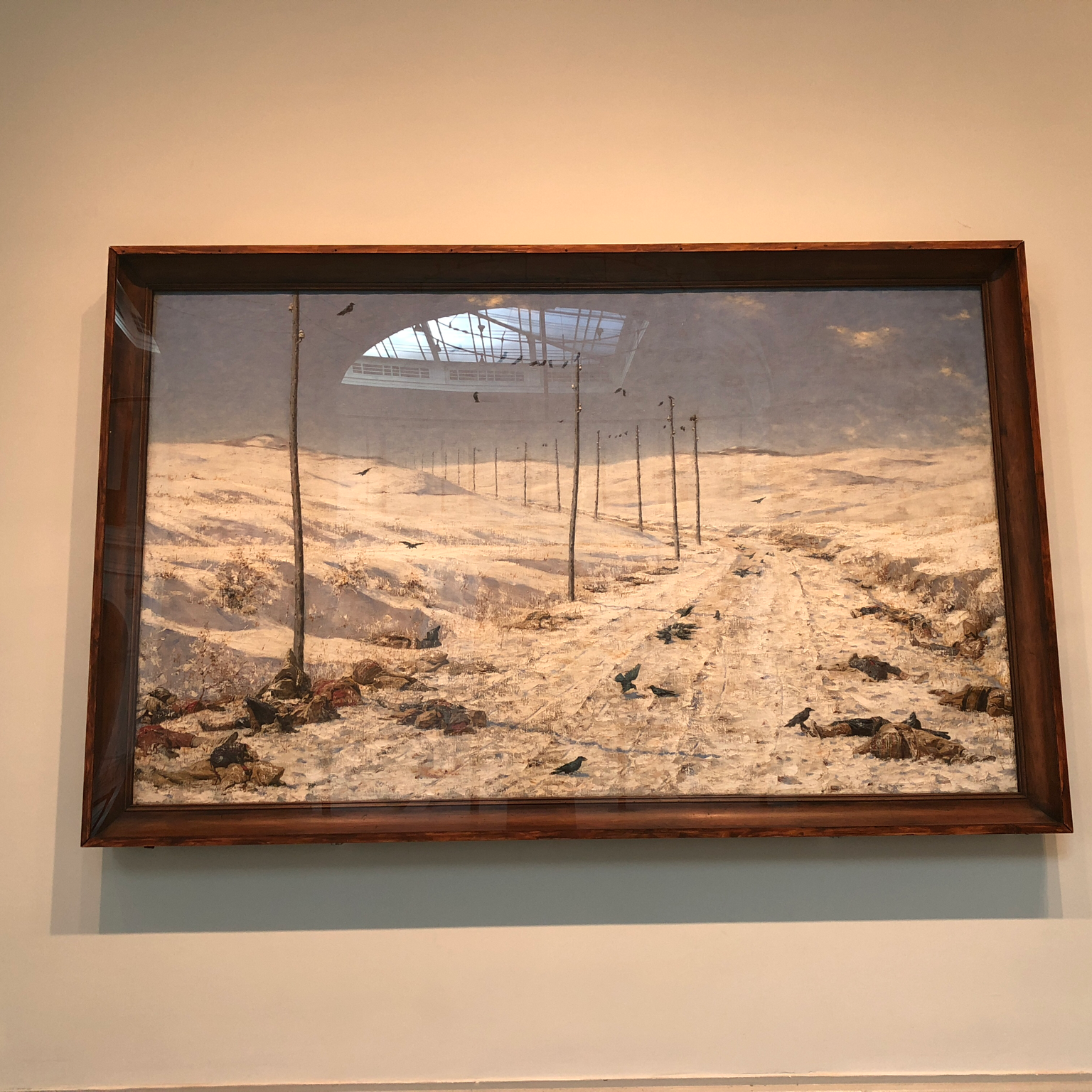

This is indeed a very tragic painting. Vasily Vereshchagin volunteered for the staff of the Russian army. He wanted to go to the front lines in order to (in his own words) "see with my own eyes a regular European war" and to "observe, feel and study people." The two Vereshchagin works you see there serve as a sort of "before and after" of the same scene. In "A Resting Place of Prisoners," you see the Russian soldiers and the Turkish prisoners buckling down in a snowstorm following the fourth Battle of Plevna while marching to the Danube and in "The Road of the War Prisoners," you see the aftermath of the bodies left frozen on the road.
Thank you! What year would this have been?
This battle took place in December of 1877. Vereshchagin painted this and the accompanying work in his Paris studio, after the war had ended, in 1878-79.
The artist has painted high-voltage lines, but it seemed to me that the appearance of this one dates from 1882 and the painting was painted in 1879. There were already high-voltage lines?


What you see are actually telegraph poles, not electrical voltage lines.
Can you tell me more about the Americans who bought the paintings by Vereshchagin?
Both of the paintings were purchased in the artist's sale here in New York in 1891. They were bought by Brooklyn collector John W. Brown, the president of Long Island Brewing Company. Upon his death, his wife, Lilia Brown donated them to the museum in memory of her husband.
The plaque said something about them being haunted by memories of the American Civil War. Is there a story there?
Many Americans were traumatized by the horrors of the Civil War, in the end, it became a war of attrition and there were many horrific tales from prisoner of war camps in the South. This fueled a pacifist movement here in the US. Vereshchagin was a pacifist himself and his work depicting the horrific realities of war were popular with pacifists as well as veterans around the globe.
Ah OK. I was just wondering if Brown served in the war or if there was a specific incident that the painting reminded him of. Thank you!
The Road of the War Prisoners
Vasily Vereshchagin
European Art
Vasily Vereshchagin’s two monumental paintings depicting wartime violence stem from the artist’s own experience as a volunteer correspondent and combatant during the Russo-Turkish War in 1877–78.
In A Resting Place for Prisoners, a snowstorm beats down on Turkish prisoners who are monitored by Russian soldiers wielding lances while a horse and carriage are buried under the snow in the foreground. The Road of the War Prisoners depicts bloodied, frozen prisoners in the storm’s aftermath. Crows perch atop the telegraph wires and pick at the lifeless prisoners strewn across the road.
Openly antiwar in its biting realism and unflinching portrayal of death, The Road of the War Prisoners was rejected for the czar’s collection. In 1891, Vereshchagin sold both canvases to New York collectors still haunted by the horrors of the U.S. Civil War.
In A Resting Place for Prisoners, a snowstorm beats down on Turkish prisoners who are monitored by Russian soldiers wielding lances while a horse and carriage are buried under the snow in the foreground. The Road of the War Prisoners depicts bloodied, frozen prisoners in the storm’s aftermath. Crows perch atop the telegraph wires and pick at the lifeless prisoners strewn across the road.
Openly antiwar in its biting realism and unflinching portrayal of death, The Road of the War Prisoners was rejected for the czar’s collection. In 1891, Vereshchagin sold both canvases to New York collectors still haunted by the horrors of the U.S. Civil War.
This text refers to these objects:
06.46; 06.45
MEDIUM
Oil on canvas
DATES
1878-1879
DIMENSIONS
71 1/4 x 117 11/16 x 2 1/4 in. (181 x 298.9 x 5.7 cm)
frame: 79 3/4 × 126 3/16 × 6 3/4 in. (202.6 × 320.5 × 17.1 cm) (show scale)



COLLECTIONS
European Art
ACCESSION NUMBER
06.46
CREDIT LINE
Gift of Lilla Brown in memory of her husband, John W. Brown
EXHIBITIONS
MUSEUM LOCATION
This item is not on view
CAPTION
Vasily Vereshchagin (Russian, 1842-1904). The Road of the War Prisoners, 1878-1879. Oil on canvas, 71 1/4 x 117 11/16 x 2 1/4 in. (181 x 298.9 x 5.7 cm). Brooklyn Museum, Gift of Lilla Brown in memory of her husband, John W. Brown
, 06.46 (Photo: Brooklyn Museum, 06.46_PS4.jpg)
IMAGE
overall, 06.46_PS4.jpg. Brooklyn Museum photograph, 2011
"CUR" at the beginning of an image file name means that the image was created by a curatorial staff member. These study images may be digital point-and-shoot photographs, when we don\'t yet have high-quality studio photography, or they may be scans of older negatives, slides, or photographic prints, providing historical documentation of the object.
RIGHTS STATEMENT
No known copyright restrictions
This work may be in the public domain in the United States. Works created by United States and non-United States nationals published prior to 1923 are in the public domain, subject to the terms of any applicable treaty or agreement.
You may download and use Brooklyn Museum images of this work. Please include caption information from this page and credit the Brooklyn Museum. If you need a high resolution file, please fill out our online application form (charges apply).
The Museum does not warrant that the use of this work will not infringe on the rights of third parties, such as artists or artists' heirs holding the rights to the work. It is your responsibility to determine and satisfy copyright or other use restrictions before copying, transmitting, or making other use of protected items beyond that allowed by "fair use," as such term is understood under the United States Copyright Act.
The Brooklyn Museum makes no representations or warranties with respect to the application or terms of any international agreement governing copyright protection in the United States for works created by foreign nationals.
For further information about copyright, we recommend resources at the United States Library of Congress, Cornell University, Copyright and Cultural Institutions: Guidelines for U.S. Libraries, Archives, and Museums, and Copyright Watch.
For more information about the Museum's rights project, including how rights types are assigned, please see our blog posts on copyright.
If you have any information regarding this work and rights to it, please contact copyright@brooklynmuseum.org.
RECORD COMPLETENESS
Not every record you will find here is complete. More information is available for some works than for others, and some entries have been updated more recently. Records are frequently reviewed and revised, and we welcome any additional information you might have.


Download our app and ask your own questions during your visit. Here are some that others have asked.
What is this?


Vereshchagin painted a series of twenty paintings about the Russo-Turkish war that started in 1877.
This is like a before-and-after pair: thousands of Turkish prisoners of war froze to death while being marched from Plevna to Russian prisoner-of-war camps on the Danube River in the dead of winter. Vereshchagin watched the men collapse out of weakness. It's a strong anti-war statement, influenced by the artist's eyewitness experiences.
Was Vereshchagin a soldier ?
Vereshchagin wasn't a soldier, but he did volunteer as a staff member for the Russian army at the outbreak of the Russo-Turkish war in 1877 (He was assigned without salary or uniform to the staff of General Dmitry Skobelev in Bulgaria). He saw himself more as an artist and a documenter of the war. He often traveled with the military so he could witness combat and paint battle scenes, but was actually very critical of the war and the actions of the Russian military.
Horrified and deeply affected by what he had seen, Vereshchagin had created these paintings as open anti-war statements. He has said: "As an artist, what I am faced with is war, and I bash it with as much strength as I have; whether my blows are effective-that is another question, a question of my talent, but I bash it with all my might and without mercy."
Crows picking at bodies-this is horrifying. Are they soldiers? Where is this set?


It is, isn't it? Vereshchagin painted his direct observations during the Russo-Turkish war. Turkish prisoners or war froze to death while being marched from Plevna in northern Bulgaria to Russian prisoner-of-war camps on the Danube River in the dead of winter. Vereshchagin watched the men collapse out of weakness. The two paintings serve as a sort of before-and-after: In the days after the tragedy, there was nobody to move the bodies off the road so passing carts and gun-carriages crushed them into the snow.
I'm interested in how it's placed next to the Anisfeld seascape. Is there a narrative to be drawn from this wall? Or is it more thematic?


This wall is devoted to Russian modern art and features thirteen paintings spanning 100 years. The diversity of their scale, subject-matter, and style is a tribute to the dramatic aesthetic and political changes taking place in Russia, and across Europe, during the late-19th and early-20th centuries. Large-scale landscapes seen from unusual perspectives were a popular genre in Russia at this time. The paintings by Vasily Vereshchagin and Boris Anisfeld both draw attention to the vastness of the Russian Empire's landscape and the powerful impact of the elements. Vereshchagin shows the ferocity and bleakness of winter in the fields of Bulgaria. In Anisfeld’s canvas, painted from the Aiou-Dagh Mountain in the Crimean Peninsula, the artist introduces a new aerial viewpoint emphasizing the clouds and reducing the battleship below to a tiny object in the vast sea. Vereshschagin's picture conveys a message about the nature of warfare. The artist witnessed the devastating Russo-Turkish war of 1877 and was deeply affected by the loss of life on both sides.
What is the setting of this painting? Are those dead people on the ground?


You're right those actually are dead bodies on the frozen ground. The artist, Vasily Vereshchagin, painted what he witnessed during the Russo-Turkish war. In 1877, while working as a war correspondent, he witnessed thousands of Turkish prisoners freezing to death while being marched from the city of Plevna in Bulgaria to Russian war camps on the Danube River. This scene is the day after when the people who had frozen to death over the night were just run over with carts and tanks as they passed. Very gruesome.
You can see Vereshchagin's other painting, depicting the night before, the prisoners huddled together during the snow storm to keep warm, just down the wall from this one.
Can you tell me the story behind this?


Vasily Vereshchagin, the artist, volunteered for the staff of the Russian army. He wanted to go to the front lines in order to (in his own words) "see with my own eyes a regular European war" and to "observe, feel and study people". The two Vereshchagin works you see there serve as a sort of "before and after" of the same scene. In "A Resting Place of Prisoners," you see the Russian soldiers and the Turkish prisoners buckling down in a snowstorm while marching to the Danube and in "The Road of the War Prisoners," you see the aftermath of the bodies left frozen on the Russian road.
Was the artist a soldier? If so, did he suffer any injuries during his observations?


Vasily Vereshchagin was a war correspondent. With the outbreak of the Russo-Turkish War in 1877, Vereshchagin, who was living in Paris at the time, volunteered for the staff of the Russian army. He wanted to go to the front lines to observe what was happening and these two paintings were created out of what he witnessed.
He was wounded, but during a different incident than the one represented here. While on board a Russian ship that was placing navel mines, Vereshchagin was hit in the hip with a bullet when the Turkish army started firing at the ship from the shore. His wound almost killed him but he eventually recovered and traveled to the battlefront at Plevna, in northern Bulgaria, the aftermath of which he painted in these two pictures.
This painting's size and subject matter struck me. I'm also interested in this because I've never seen Russian artists displayed together before.


This painting and the one next to it by Vasily Vereshchagin were both painted from his direct observations along the road from Plevna (in present-day Bulgaria) to Russian prisoner-of-war camps on the Danube River. He was deeply disturbed and moved by what he saw happening to the captured Turkish troops. He wrote: "The frost set in so suddenly...that the brave defenders of Plevna in their stiff frozen overcoats were too weak to resist it, and by ones and twos fell on the road and were frozen to death."
Did the artist get in trouble for his paintings? They're very moving.
Yes, Vasily Vereshchagin's depictions of the negative, rather than the heroic, aspects of war found him in opposition to the Russian state for most of his life. This painting and the one next to it were both painted from his personal observations of a horrific event during the Russo-Turkish War (1877-78). After the Russian army sacked the city of Plevna in northern Bulgaria, they marched thousands of Turkish soldiers to Russian prisoner-of-war camps on the Danube River in the dead of winter. Thousands died. The paintings were so displeasing to the Russian military and those closely tied to the monarchy that the Grand Prince refused to see them when they were exhibited in Moscow in 1879. Consequently,later that year when the Grand Prince was in Paris, Vereshchagin refused to see him or let him see his paintings. After this, Grand Duke Vladimir, the President of the Academy of Arts, began to severely criticize Vereshchagin for his "impossible subjects." Vereshchagin's works were censored in Russia and he had a difficult time selling them in Europe. By the turn of the century, he was famous for his "war against war" and his work was cited and debated by peace activists and politicians. In 1901, he was nominated for the first Nobel Peace Prize.
Very powerful! What war is depicted here?


These paintings are from the Russo-Turkish war that took place in the late 1870s. Specifically, these depict the aftermath of the 1877 Battle of Plevna in modern day Bulgaria.
Vereshchagin also observed a lot of Russian military activity in Central Asia. He was a military staff artist from 1867-1870. What I find most interesting though is that his portrayals didn't show how great and powerful Russia was; his view was objectively about the horror and pain of war, irrespective of which side you're on.
What happened in this scene?


Both the large paintings by Vasily Vereshchagin depict a terrible event during the Russo-Turkish War in 1877, which the artist witnessed as a war correspondent. After the Russian army sacked the city of Plevna in northern Bulgaria, they marched thousands of Turkish soldiers to Russian prisoner-of-war camps on the Danube River in the dead of winter. The one on the left shows the poorly dressed prisoners huddled together for warmth in the harsh during a terrible snow storm.
The painting that you sent the picture of is the morning-after. The prisoners froze overnight and perished right on the road. Not wanting to waste time, the Russian soldiers continued on, leaving the dead behind, even crushing them under foot and under horse-drawn carriages. They are truly gruesome scenes of war.
I don't think I've seen snow depicted in this way before.


What about it feels innovative or unique to you? It kind of goes against the natural order of events, or how we think of the progress of snow, right? Usually snow falls down, but this reversal, this violent sweeping upward, creates this sense of unease, and even violence.
Yes, you're right about the upwards motion, it seems cyclonic. The paint seems so thin in places. Can I see the canvas surface?
That's a great question, I can't tell from here, I would have to go up and look at it up close.
There's super thick paint next to untouched canvas, I think.
The artist painted these in Paris at the height of Impressionism, we can see this influence in the broken brushstrokes, but looked also to Gustave Courbet and Realism, note the mottled surfaces throughout. The condition of this picture is actually pristine. When it was treated in 2010 for the current hang, our conservators only removed a yellowed varnish layer and found the original paint intact.
Your colleague may be right. I see thicker paint in that grey brown too. I think now it might be washes!
Also, something about these figures reminds me of Goya's May 3rd. They're both horrific scenes.


I really like your Goya comparison. Vereshchagin's art, like Goya's, really does show us the horrors of war!
Were they painting at the same time?
I'm certain that Vereshchagin was aware of Goya's work as this was completed some 70 years later. Goya passed away in 1828, about 20 years before Vereshchagin was born.
Ah, there you go then. Dates are never my strong point! Thanks! I much prefer this to Google.
Thank you!
Was the artist a soldier?


With the outbreak of the Russo-Turkish War in 1877, Vereshchagin a Russian who was living in Paris at the time, volunteered for the staff of the Russian army. He wanted to go to the front lines in order to "see with my own eyes a regular European war." He was assigned without salary or uniform. Although he fought actively in the war, he was not strictly or exclusively a soldier. He also acted as a correspondent, documenting the war of his own volition and as sanctioned by the military.
What war was this? Where is this taking place?


Vereshchagin is depicting scenes from the Russo-Turkish War, which occurred between 1877 and 1878. Vereshchagin himself was a war correspondent for the Russian army. The battle depicted is the Siege of Plevna, a decisive stage of the conflict, in which the Russian and Romanian forces defeated the Turkish army's stronghold of Plevna, in Northern Bulgaria. Eventually, the Russian victory led to the liberation of Bulgaria and the establishment of the Bulgarian state.
Is this the same artist you see on the book jackets of Gogol?


It's possible, there are many covers available for Gogol's works today. Like Gogol's writing, Veresechagin's paintings are known for being surrealistic and grotesque. Vereshchagin is a rather famous Russian war painter of the 19th century. He is known for his graphic realism and was born and raised in northern Russia. He traveled extensively and worked artistically during military expeditions in which he also participated.
Could you tell me more about the artist?


Vasily Vereshchagin is a rather famous Russian war painter of the 19th century,. He is known for his graphic realism and was born and raised in northern Russia. He traveled extensively and worked artistically during military expeditions in which he also participated.
I'm looking at the two paintings be Vereschagin.
Each of the paintings shows a scene from the Russo-Turkish War , more specifically, the 1877 Battle of Plevna in modern day Bulgaria.
In the painting to the left, prisoners huddle in a snowstorm. In the other, their frozen bodies lie on the snow in the aftermath of the storm and their imprisonment.
Wow I found it very scary. I'm used to seeing paintings of battle scenes but not of grim aftermath.
Indeed they are, and very dramatic! The artist observed these scenes first hand! He was commissioned by the Russian government to paint the army in action, but Vereshchagin was shocked and appalled by the realities of war.
Usually the battle paintings I see are glorifying it or ultra-patriotic.
Exactly! His method of painting war went against the trends for painting the subject in Russia at the time. His paintings were criticized by the government and military.
What are on the posts?


Very perceptive! We have tried to find a definitive answer, but haven't been able to. Our best guess based on the location and time period is that they were for some kind of telegraph wires.
In 1879?
Yes! The telegraph went into use beginning in the 1830s-40s.
Sounds right. Must be wireless!
You almost can't see them, but the wires are what the birds are sitting on.
It seems that both paintings are on the same road. First, the storm with lots of cold people, then the dead and desolate.
They may well be on the same road! While Vereshchagin would have sketched on site, these were painted in the studio and can be understood to include a bit of his opinion.
He was commissioned by the government to paint the glory of the Russian Army, but what he saw on the front lines so horrified him that he painted these instead.
It is also worth mentioning that, even before going to war, some of Vereshchagin's work was quite dark.
His work is quite large. How did he get away with it?
As for his method of making, he dealt with the size by first creating field sketches and then painting a series of twenty larger paintings about the war in his studio in Paris later that same year. The size was more manageable when working this way.
Is this painting showing the 1900’s?


It's actually the 1800s! This was painted between 1878 and 1879. This shows what Plevna looked like after the battle that took place in 1877.
Where's the focal point in this?


Which area of the painting would you say immediately draws your interest or attention?
The crows on that deserted road.
That's a good choice. This painting doesn't really have one strong focal point, which is itself significant. In the mid- to late-nineteenth century landscape painters experimented with representing landscape without an invented focal point like the traditional rules of art would require. The way these crows are lined up help to lead you eye down the road.
The concentration of bodies near the pole on the lower left would also be an option. Their density and weight compared to the rest of the composition is more akin to a traditional focal point.
This painting is so haunting...can you tell me about the background story please?


This is indeed a very tragic painting. Vasily Vereshchagin volunteered for the staff of the Russian army. He wanted to go to the front lines in order to (in his own words) "see with my own eyes a regular European war" and to "observe, feel and study people." The two Vereshchagin works you see there serve as a sort of "before and after" of the same scene. In "A Resting Place of Prisoners," you see the Russian soldiers and the Turkish prisoners buckling down in a snowstorm following the fourth Battle of Plevna while marching to the Danube and in "The Road of the War Prisoners," you see the aftermath of the bodies left frozen on the road.
Thank you! What year would this have been?
This battle took place in December of 1877. Vereshchagin painted this and the accompanying work in his Paris studio, after the war had ended, in 1878-79.
The artist has painted high-voltage lines, but it seemed to me that the appearance of this one dates from 1882 and the painting was painted in 1879. There were already high-voltage lines?


What you see are actually telegraph poles, not electrical voltage lines.
Can you tell me more about the Americans who bought the paintings by Vereshchagin?
Both of the paintings were purchased in the artist's sale here in New York in 1891. They were bought by Brooklyn collector John W. Brown, the president of Long Island Brewing Company. Upon his death, his wife, Lilia Brown donated them to the museum in memory of her husband.
The plaque said something about them being haunted by memories of the American Civil War. Is there a story there?
Many Americans were traumatized by the horrors of the Civil War, in the end, it became a war of attrition and there were many horrific tales from prisoner of war camps in the South. This fueled a pacifist movement here in the US. Vereshchagin was a pacifist himself and his work depicting the horrific realities of war were popular with pacifists as well as veterans around the globe.
Ah OK. I was just wondering if Brown served in the war or if there was a specific incident that the painting reminded him of. Thank you!


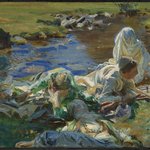
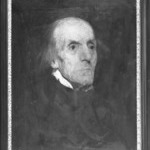
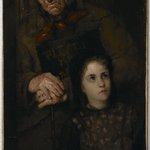

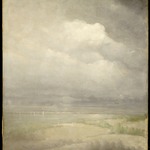
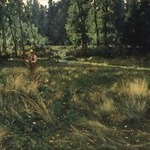

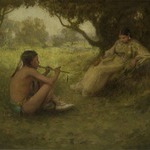




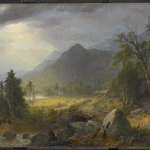

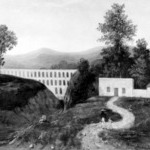
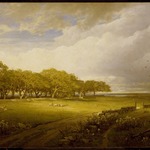
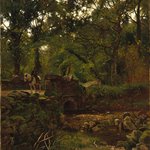


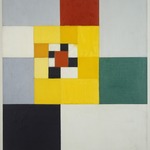


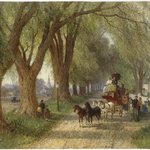
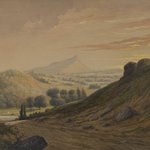

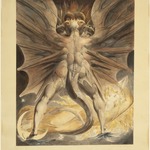
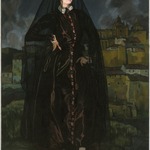

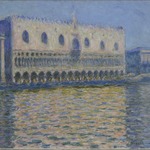


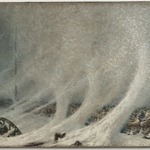



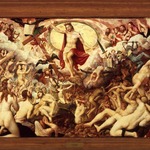

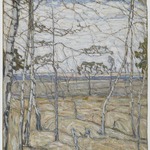
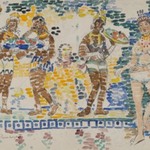
![Head of an Old Woman in Profile (Tête de vieille femme de profil à gauche) [recto]; Study of Heads (Étude de têtes) [verso]](https://d1lfxha3ugu3d4.cloudfront.net/images/opencollection/objects/size2_sq/40.527_transp1450.jpg)
